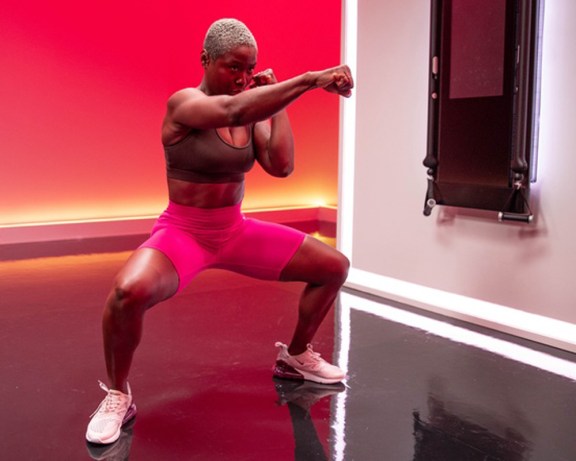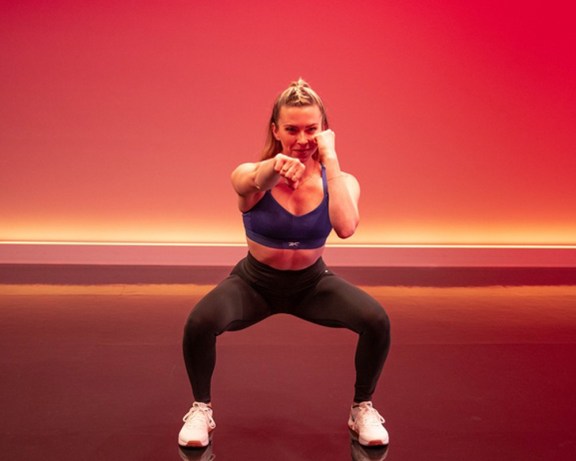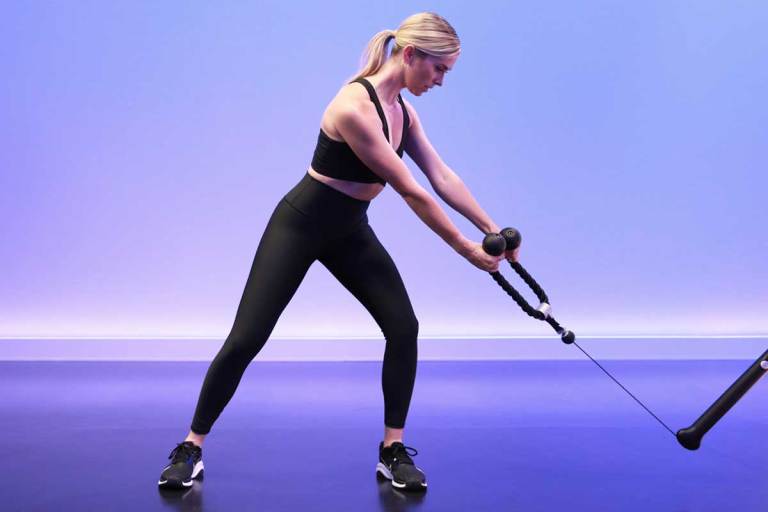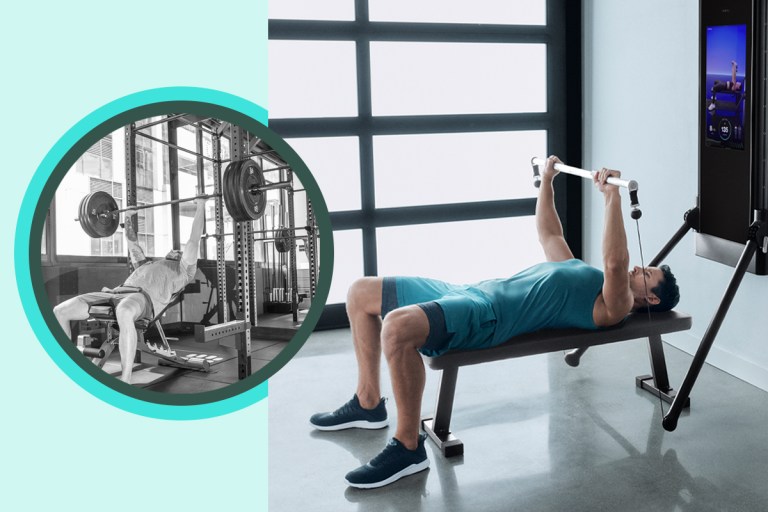Does High-Intensity Exercise Have to Be High-Impact?
How to get all the benefits of high-intensity training without joint pain.

High-intensity exercise generally calls to mind leaping, bounding, or other high-impact moves. If you’re hesitant about giving your joints a pounding, it may be enough to make you want to avoid this extremely effective type of training. But high intensity is not synonymous with high impact. If you understand the definition and purpose of high-intensity training, you’ll learn that it’s totally possible to get all the benefits of high-intensity exercise while taking it easy on your joints.
What is High-Intensity Training?
Technically, high-intensity training is any exercise that takes you beyond your anaerobic threshold, or the point at which lactate starts accumulating in your blood faster than your body can buffer it, according to Jenna Moore, a certified strength and conditioning coach and Programming Specialist at Tonal.
While most of us haven’t had our anaerobic thresholds calculated in a lab, we know what it feels like when we’re working at a high-intensity level. You’re breathing faster, your heart rate skyrockets, and it’s impossible to talk in full sentences. On a scale of one to 10, your rate of perceived exertion (RPE) should be between seven and nine, Moore explains. You can also gauge your effort level by monitoring your heart rate: Aim for roughly 85 percent of your maximum heart rate, says Tonal coach and certified personal trainer Kendall “Woody” Wood.
Because maintaining this effort level is very demanding, high-intensity training is typically done in intervals with alternating periods of work and recovery. The length of your work and rest intervals will vary depending on your fitness level and the goal of the session. Shorter rest periods keep your heart rate elevated for a longer duration for better cardiovascular adaptations. Longer rests give you more time to recover so you can give more effort in each working set, maximizing strength and power gains.
High-intensity interval training (HIIT) isn’t easy, but it comes with big rewards. Studies have shown that HIIT can reduce blood pressure, cholesterol, and blood sugar, as well as increase oxygen consumption (which helps with endurance) and improve body composition (meaning more muscle mass and less fat).
Compared to steady-state cardiovascular exercise, where you work at a moderate intensity from start to finish, HIIT is more time-efficient. “You’re going to burn more calories in a shorter period of time and you’re going to continue burning those calories after the fact,” says Wood. “Because you’ve worked so hard, your metabolism is working faster and you’re continuing to expend energy after you’ve done the work.” This post-workout burn is known as excess post-exercise oxygen consumption (EPOC) and these extra calories can “really accumulate,” according to Moore.
How to Do High-Intensity, Low-Impact Training
High-intensity training is all about working at a specific effort level, not doing a specific type of exercise. While high-impact exercise can certainly raise your heart rate, it’s not the only way to achieve this effort level. So if sprinting and jumping aren’t for you—maybe you’re just getting started with fitness, you’re pregnant, or recovering from an injury—you can still get in on the HIIT action.
“There are numerous ways we can elevate our heart rate without putting stress on the joints,” says Wood. “You can essentially take any form of exercise and intensify it by varying the effort.” For cardio intervals, you can replace running with a lower-impact activity such as swimming, cycling, rowing, or using an elliptical machine. On the flip side, a high-impact exercise can be done at lower intensities, such as jogging at an easy, recovery pace.
“Modifications are a sign of wisdom, not weakness.”
– Jenna Moore, Tonal Programming Specialist
Nearly all plyometric exercises have low-impact modifications that’ll still leave you sweating and breathless without the aching knees. For example, if your workout calls for jump squats, Moore suggests trying a squat to calf raise that incorporates the same explosive quality of the high-impact variation. Instead of squat jacks, try holding a low squat and tapping your feet side to side.
On Tonal, your coach will likely offer low-impact modifications for high-impact moves, or you can select a Movement Replacement that’ll be easier on your joints. “It’s great to know how to modify all of these moves and to feel empowered to make those decisions in a workout,” says Moore. “Modifications are a sign of wisdom, not weakness.”
High-intensity resistance training, in which you lift weights at a challenging tempo to reach the desired intensity level, is an excellent technique for getting your heart rate up while keeping the impact low. “If you’ve ever done 60 seconds of a squat to press on Tonal, you know that you can get yourself to that level of intensity where you’re huffing and puffing while still staying on the ground and not putting those impact forces on your joints,” says Moore.
Metabolically demanding moves, such as the full-body squat to press, are very effective at eliciting a high effort level, but you can make any lift high-intensity by increasing your speed. (Note: To maintain your form while moving quickly, you’ll want to lift lighter in your high-intensity resistance training than you would if you were lifting for strength gains.)
High-Intensity, Low-Impact Workouts on Tonal
Whether you’re moving resistance at a fast pace or sweating it out on the mat, there are lots of options for high-intensity, low-impact training on Tonal. Try one of these sessions to see how you can work hard without pounding your joints.
Low-Impact Quick Fit – Coach Joe Rodonis

Fire up all your major muscle groups in this short but efficient workout that’s gentle on your joints. In duration-based sets, you’re able to work at your own pace to find a tempo that’s challenging enough to hit your high-intensity range.
Joint-Friendly Cardio – Coach Tanysha Renee

Feel the burn and break a sweat in this off-Tonal cardio workout that’s all low-impact. You’ll get your heart pumping and break a sweat without any jumping.
Work It Circuit – Coach Ash Wilking

Coach Ash Wilking details plenty of low-impact modifications in this circuit-style cardio workout so you can push the effort while going easy on your joints. The 2:1 work-to-rest ratio will challenge your stamina and leave you feeling energized.
HIIT the Bench – Multiple Coaches

In this three-week program, you’ll sample multiple HIIT formats including pyramid, circuit, and bootcamp, while using only low-impact moves. Using your bench for support and stability, you’ll gain proficiency in essential movement patterns while elevating your heart rate.


